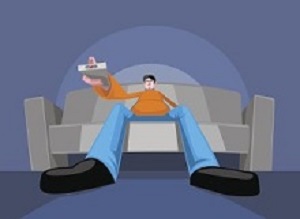 Prolonged sitting time and low physical activity levels were linked with the development of lower urinary tract symptoms (LUTS) in a study of 69,795 middle-aged Korean men.
Prolonged sitting time and low physical activity levels were linked with the development of lower urinary tract symptoms (LUTS) in a study of 69,795 middle-aged Korean men.
A team led by researchers at the Kangbuk Samsung Hospital, in South Korea, found that the incidence rate of LUTS – which relate to urine storage and/or voiding disturbances – was 39 per 1000 person-years. (A person-year is the number of years of follow-up multiplied by the number of people in the study.)
"The results support the importance of both reducing sitting time and promoting physical activity for preventing LUTS," said lead author Dr Heung Jae Park. "Further studies are still needed to examine the influence of sedentary behaviours on LUTS and its determinants," added senior author Dr Seungho Ryu.
Abstract
Objectives: To examine the association of sitting time and physical activity level with the incidence of lower urinary tract symptoms (LUTS) in a large sample of Korean men.
Materials and Methods: A cohort study was performed in 69 795 Korean men, free of LUTS at baseline, who were followed up annually or biennially for a mean of 2.6 years. Physical activity level and sitting time were assessed using the validated Korean version of the International Physical Activity Questionnaire Short Form. LUTS were assessed using the International Prostate Symptom Score (IPSS) and clinically significant LUTS were defined as an IPSS score ≥8.
Results: Over 175 810.4 person‐years, 9 217 people developed significant LUTS (incidence rate, 39.0 per 1 000 person‐years). In a multivariable‐adjusted model, both low physical activity level and prolonged sitting time were independently associated with the incidence of LUTS. The hazard ratios (95% confidence intervals [CIs]) for incident LUTS comparing minimally active and health‐enhancing physically active groups vs the inactive group were 0.94 (95% CI 0.89–0.99) and 0.93 (95% CI 0.87–0.99), respectively (P for trend 0.011). The hazard ratios (95% CIs) for LUTS comparing 5–9 and ≥10 h/day sitting time vs <5 h/day were 1.08 (95% CI 1.00–1.24) and 1.15 (95% CI 1.06–1.24), respectively (P for trend <0.001).
Conclusions: Prolonged sitting time and low physical activity levels were positively associated with the development of LUTS in a large sample of middle‐aged Korean men. This result supports the importance of both reducing sitting time and promoting physical activity for preventing LUTS.
Authors
Heung Jae Park, Chang Hoo Park, Yoosoo Chang, Seungho Ryu
[link url="https://www.sciencedaily.com/releases/2018/03/180321090926.htm"]Wiley material[/link]
[link url="https://onlinelibrary.wiley.com/doi/abs/10.1111/bju.14147"]BJU International abstract[/link]
